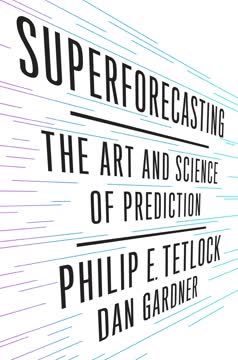つの重要なポイント
1. 複雑適応システム:予測不可能性の理解
複雑さ自体が効果的な適応を促進する技術を可能にする。
不確実性を受け入れる。 複雑適応システム(CAS)は、複数の相互作用するエージェント、創発特性、予測の難しさによって特徴付けられる。これらのシステムは、生物学、経済学、社会組織などのさまざまな領域で見られる。CASを理解するには、従来の線形思考から、システムの構成要素の相互関連性を認識するより全体的なアプローチへのシフトが必要である。
主な特徴:
- 複数の相互作用するエージェント
- 非線形関係
- 創発特性
- 適応行動
- 予測の難しさ
これらの特徴を認識することで、管理者や政策立案者は、システムの本質的な複雑さに逆らうのではなく、それに沿った戦略を開発することができる。
2. 複雑さの活用:行動のためのフレームワーク
本書の主張は、複雑さを活用できるということである。
新しいアプローチ。 複雑さを排除または制御しようとするのではなく、著者はそれを活用するためのフレームワークを提案している。このアプローチは、変異、相互作用、選択の3つの主要なプロセスに焦点を当てている。これらのプロセスを理解し、影響を与えることで、意思決定者は完全な制御や予測を必要とせずに、複雑なシステムを望ましい結果に導くことができる。
フレームワークの構成要素:
- 変異:多様性の創出と維持
- 相互作用:接続パターンの形成
- 選択:成功した戦略の強化
このフレームワークは、複雑な状況を体系的に分析し、不確実性の中でも有望な行動の可能性を示唆する方法を提供する。
3. 変異:適応の原材料
変異は適応の原材料を提供する。
多様性の促進。 複雑なシステムでは、多様性が適応とイノベーションにとって重要である。しかし、多様性と均一性のバランスが必要である。多様性が多すぎると混乱を招き、少なすぎると停滞を引き起こす。管理者や政策立案者は、システム内で多様性を創出、維持、破壊するメカニズムを考慮する必要がある。
変異の源:
- エラーを伴うコピー(突然変異)
- 既存の要素の再結合
- 新しいエージェントや戦略の導入
これらの変異源を意識的に管理することで、組織は変化する環境に対する適応能力と回復力を向上させることができる。
4. 相互作用:パターンと結果の形成
相互作用は、システム内のイベントがエージェント同士やアーティファクトとの相互作用から生じるため、我々のフレームワークにおいて重要である。
接続のパターン。 複雑なシステムにおけるエージェントの相互作用の仕方は、その行動と結果に深く影響を与える。相互作用のパターンは、近接性、活性化、物理的および概念的空間の構造などの要因によって形成される。これらのパターンを理解し、影響を与えることで、管理者は直接的な制御なしにシステムの行動を導くことができる。
主要な概念:
- 近接性:エージェントが相互作用しやすくなる要因
- 活性化:エージェントの活動のタイミングに影響を与えるプロセス
- 空間:相互作用を構造化する物理的および概念的環境
これらの要因を操作することで、システム全体に利益をもたらす創発特性や自己組織化行動を引き起こすことができる。
5. 選択:成功の強化と失敗の排除
選択プロセスは、複雑適応システムにおける成功の強化と失敗の排除を推進する。
進化の形成。 選択メカニズムは、どのエージェントや戦略がコピーされ、修正され、または排除されるかを決定する。このプロセスは、複雑なシステムにおける適応と改善の中心である。効果的な選択には、成功の明確な基準、適切なクレジットの帰属、新しいエージェントや戦略を創出するメカニズムが必要である。
選択の構成要素:
- 成功の基準を定義する
- 選択のレベルを決定する(エージェント対戦略)
- 成功と失敗のクレジットを帰属する
- 新しいエージェントや戦略を創出する
これらの構成要素を慎重に設計し管理することで、組織は複雑な環境での学習と適応能力を向上させることができる。
6. 探索対活用:イノベーションと効率のバランス
複雑さの知識を活用してより良い結果を得ることが目標である。
戦略的トレードオフ。 複雑なシステムにおける基本的な課題は、探索(新しい可能性を探る)と活用(既知の戦略を利用する)のバランスを取ることである。このトレードオフは、生物進化から組織戦略に至るさまざまな文脈で存在する。長期的な成功と適応のためには、適切なバランスを見つけることが重要である。
探索を促進する要因:
- 長期的または広範な問題
- 迅速で信頼性の高いフィードバック
- 探索による大災害のリスクが低い
- 現状における差し迫った危機
管理者は、新しい戦略の探索にどれだけ投資するかと既存の戦略を活用するかを決定する際に、これらの要因を考慮する必要がある。
7. クレジットの帰属:成功と失敗から学ぶ
適応エージェントが急速に変化する環境に住んでいる場合、他のエージェントがどのパフォーマンス指標が機能し、どれが失敗するかを見て学ぶ傾向がある。
効果的な学習。 複雑なシステムでは、成功のクレジットや失敗の責任を正確に帰属することが難しい。しかし、効果的なクレジット帰属方法を開発することは、学習と改善にとって重要である。組織は、成功の細かい指標を使用し、避けられない帰属エラーに対処する戦略を開発することで、学習能力を向上させることができる。
クレジット帰属のアプローチ:
- 細かく短期的な成功指標を使用する
- 予想外の結果(予想より良いまたは悪い結果)から学ぶ
- シミュレーションを通じて代替経験を開発する
クレジット帰属を改善することで、組織は複雑な環境での学習と適応を加速させることができる。
8. 複雑なシステムにおけるリーダーシップ:例と基準の設定
リーダーの行動は他の人に模倣される可能性が特に高い。
可視性を通じた影響。 リーダーは、他の人が模倣しやすい例を設定することで、複雑なシステムを形成する上で重要な役割を果たす。この影響は、基準を設定し、成功を示し、有益な規範を確立する能力から生じる。複雑なシステムにおける効果的なリーダーは、この可視性を活用して組織を導く方法を理解している。
リーダーが影響を与える方法:
- 他の人にインセンティブを提供する基準を設定する
- 成功した戦略やパフォーマンス指標を示す
- コミュニティ内で有益な規範を確立する
可視的なリーダーシップを意識的に行使することで、管理者は複雑な環境での適応と成功を促進する方法で組織の行動と価値観を形成することができる。
最終更新日:
FAQ
What is "Harnessing Complexity" by Robert Axelrod and Michael D. Cohen about?
- Exploring Complex Adaptive Systems: The book examines how organizations and social systems function as Complex Adaptive Systems (CAS), where many agents interact, adapt, and evolve in unpredictable ways.
- Framework for Action: It provides a practical framework for managers and policymakers to harness, rather than eliminate, complexity for productive ends.
- Interdisciplinary Approach: Drawing from evolutionary biology, computer science, and social design, the authors synthesize insights to address real-world organizational and policy challenges.
- Focus on Variation, Interaction, Selection: The book is structured around three central processes—variation, interaction, and selection—that drive adaptation and change in complex systems.
Why should I read "Harnessing Complexity" by Axelrod and Cohen?
- Practical Guidance for Uncertainty: The book offers actionable strategies for thriving in environments where prediction and control are difficult due to complexity.
- Bridges Theory and Practice: It moves beyond metaphor, providing explicit methods and questions to apply complexity science to organizational and policy design.
- Relevant Across Fields: Whether you’re in business, government, or social policy, the concepts are applicable to a wide range of complex, adaptive challenges.
- Timely Insights: With the rise of the Information Revolution and rapid technological change, understanding how to harness complexity is more relevant than ever.
What are the key takeaways from "Harnessing Complexity" by Axelrod and Cohen?
- Complexity as an Asset: Complexity is not just a liability to be controlled; it can be harnessed for innovation, adaptation, and improvement.
- Population Approach: Viewing systems as populations of diverse agents and strategies helps identify leverage points for change.
- Balance Exploration and Exploitation: Effective adaptation requires balancing the creation of new possibilities (exploration) with the refinement of existing ones (exploitation).
- Interventions Matter: Deliberate changes to variation, interaction patterns, and selection criteria can channel complexity toward desirable outcomes.
How do Axelrod and Cohen define a Complex Adaptive System in "Harnessing Complexity"?
- Populations of Agents: A CAS consists of multiple agents (individuals, organizations, or even software) that interact with each other and their environment.
- Adaptive Strategies: Agents use and modify strategies based on experience, imitation, and trial-and-error learning.
- Emergent Properties: System-level behaviors and structures emerge from local interactions, often in ways that are hard to predict from the parts alone.
- Continuous Coevolution: As agents adapt, they change the context for others, leading to ongoing, dynamic coevolution within the system.
What is the main framework or method proposed in "Harnessing Complexity" by Axelrod and Cohen?
- Three Key Processes: The framework centers on variation (generating diversity), interaction (patterns of agent contact), and selection (amplifying success).
- Population Perspective: It emphasizes analyzing populations of agents and strategies, not just individual actors or static structures.
- Guiding Questions: The authors provide a set of questions to systematically analyze and intervene in complex systems, focusing on leverage points.
- Active, Not Predictive: The method is about guiding action and adaptation, not making detailed predictions or seeking total control.
How does "Harnessing Complexity" by Axelrod and Cohen distinguish between complexity and chaos?
- Complexity Involves Structure: Complexity refers to systems with many interacting agents, where structure and adaptation are possible, even if prediction is hard.
- Chaos Is Disorderly: Chaos deals with highly sensitive, turbulent systems (like weather) that quickly become disordered and unmanageable.
- Potential for Improvement: Complex systems, unlike chaotic ones, often allow for thoughtful intervention and improvement through understanding interaction patterns.
- Emergence vs. Randomness: Complexity is about emergent properties from structured interactions, not just randomness or lack of order.
What are the roles of variation, interaction, and selection in "Harnessing Complexity" by Axelrod and Cohen?
- Variation: Provides the raw material for adaptation; diversity among agents and strategies is essential for innovation and resilience.
- Interaction: Determines who or what interacts with whom, shaping the flow of information, resources, and influence within the system.
- Selection: Amplifies successful agents or strategies and culls less effective ones, driving adaptation and change over time.
- Interdependence: These processes are interlocking; changes in one affect the others, creating dynamic feedback loops.
How does "Harnessing Complexity" by Axelrod and Cohen advise balancing exploration and exploitation?
- Trade-off Principle: Too much exploration (novelty) leads to disorder and missed opportunities to capitalize on what works; too much exploitation (uniformity) risks stagnation and vulnerability.
- Context Matters: The right balance depends on factors like feedback speed, risk of catastrophe, and the potential for widespread application of improvements.
- Encourage Variety When Needed: Exploration is especially valuable for long-term, widespread, or high-risk problems, or when disaster looms.
- Mechanisms for Balance: Use organizational routines, feedback systems, and structural interventions to maintain an adaptive balance.
What practical examples does "Harnessing Complexity" by Axelrod and Cohen use to illustrate its concepts?
- Grameen Banking: Harnesses village social networks to provide microcredit, leveraging existing complexity for economic development.
- Linux Open Source Development: Shows how massive variety and decentralized contributions can be managed for high-quality outcomes.
- Social Capital in Italy: Demonstrates how patterns of interaction and trust networks foster economic and governmental success.
- AIDS Research: Highlights the importance of nonrandom interaction patterns in understanding and intervening in disease spread.
How does "Harnessing Complexity" by Axelrod and Cohen address the Information Revolution?
- Accelerates Complexity: Information technology reduces barriers to interaction, increasing the complexity and interdependence of social and technical systems.
- Enables Rapid Adaptation: Advances in information processing, storage, and communication allow for faster feedback and adaptation.
- Creates New Challenges: While offering opportunities for improvement, the Information Revolution also introduces risks like systemic failures and loss of diversity.
- Framework Relevance: The book’s framework is especially suited to analyzing and intervening in the fast-changing, interconnected world shaped by information technology.
What are the main questions to ask when applying the "Harnessing Complexity" framework by Axelrod and Cohen?
- Identify Agents and Strategies: Who are the agents, and what strategies and artifacts do they use?
- Analyze Populations and Types: What populations exist, and how are types (categories) defined and maintained?
- Examine Variation and Interaction: How is variety created and destroyed? What are the patterns of interaction, and how can they be changed?
- Assess Selection and Success Criteria: What criteria are used for selection? Is selection acting on agents, strategies, or both, and how can it be harnessed for adaptation?
What are the best quotes from "Harnessing Complexity" by Axelrod and Cohen, and what do they mean?
- “Throw with your opponent’s own weight.” – This judo metaphor encapsulates the book’s philosophy: use the inherent dynamics of complexity to your advantage, rather than fighting against them.
- “Complexity can be harnessed.” – The central thesis: complexity is not just a problem to be solved, but a resource to be used for innovation and improvement.
- “In a world of mutually adaptive players, even though prediction may be difficult, there is quite a bit that you can do.” – Emphasizes that action and adaptation are possible even when the future is uncertain.
- “The purpose of this book is to help managers and policy makers harness complexity.” – Clarifies the book’s practical intent: to provide tools and frameworks for real-world decision-makers.
レビュー
本書『Harnessing Complexity』は賛否両論の評価を受けており、平均評価は3.72/5である。読者は複雑適応系に関する洞察と複雑性を管理するためのフレームワークを高く評価している。一部の読者は、複雑な環境での意思決定を理解するために本書が深遠で有用であると感じている。しかし、批評家は本書のプレゼンテーションが難解であり、重要なポイントが時折あまり関連性のない詳細に埋もれてしまうと指摘している。優れた概観として評価する人もいれば、理論的すぎて実践的な応用が不足していると感じる人もいる。一般的に、本書は複雑系の入門書として推奨されている。











